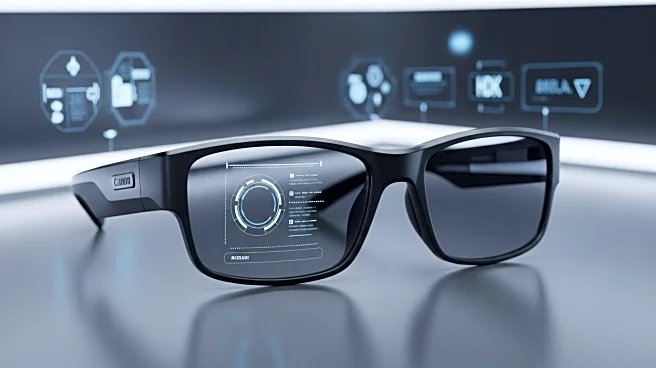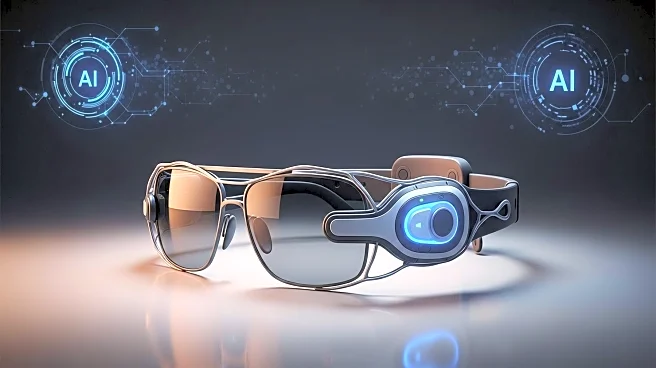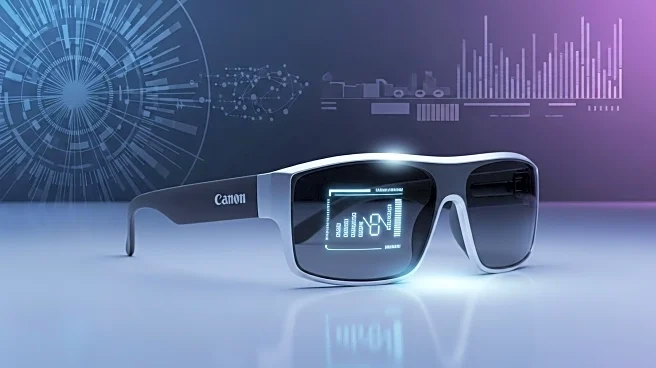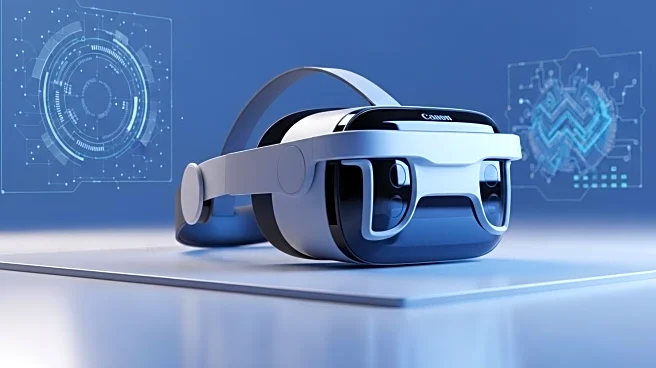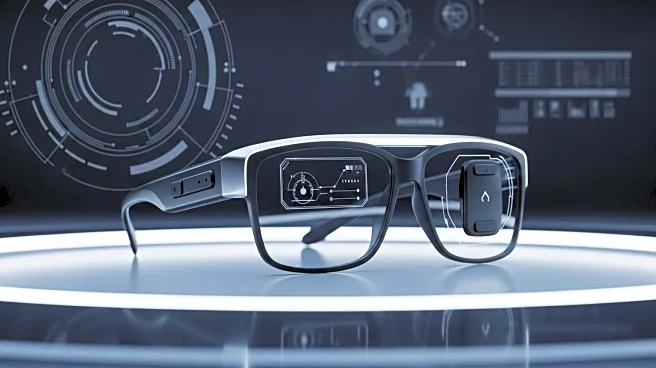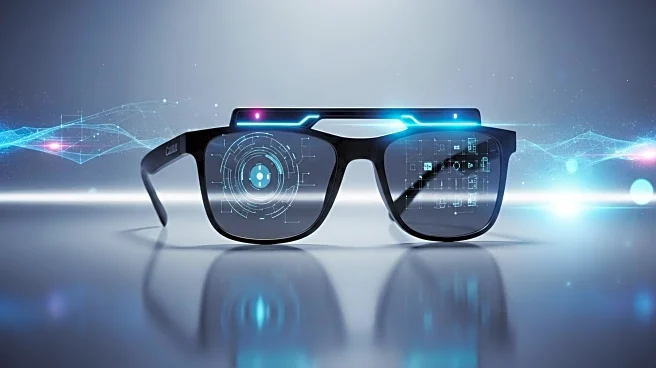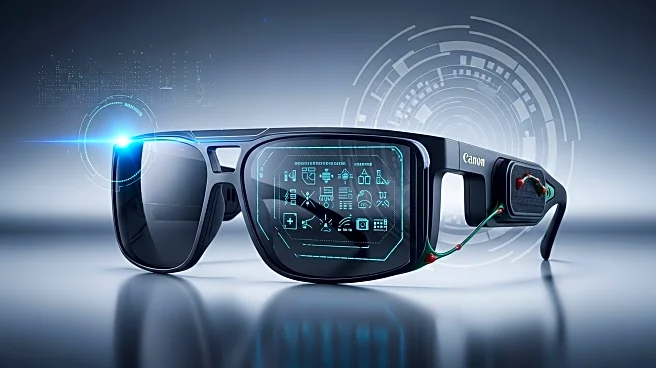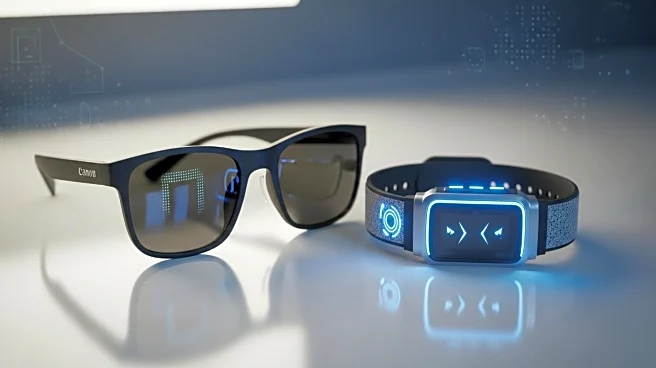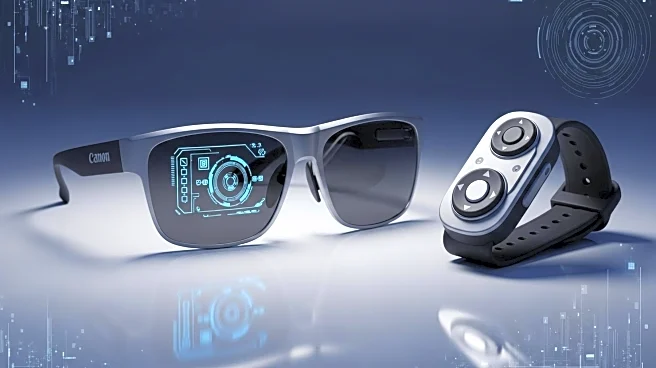What's Happening?
Meta has introduced its first smart glasses with a display, the Meta Ray-Ban Display, at the Connect 2025 event. Priced at $800, these glasses come with the Meta Neural Band, a wristband that uses surface electromyography (sEMG) to track finger movements for control. The glasses are heavier and bulkier than regular Ray-Ban models, weighing 69 grams compared to 52 grams. The display is monocular, visible only to the right eye, and has been noted for causing eyestrain. The Neural Band allows for gesture-based control, such as pinching fingers to click or adjust volume. Despite the innovative technology, the glasses have been criticized for their bulk and the monocular display, which some users find uncomfortable.
Why It's Important?
The introduction of the Meta Ray-Ban Display marks a significant step in the integration of augmented reality into consumer wearables. This development could influence the future of personal computing, potentially shifting how users interact with digital content. However, the mixed reviews highlight challenges in user comfort and practicality, which could impact consumer adoption. The success or failure of these glasses could affect Meta's position in the competitive AR market and influence future product designs. The technology's potential to change everyday interactions with digital information could have broad implications for industries focused on wearable tech and augmented reality.
What's Next?
Meta plans to release a firmware update in December to enhance the functionality of the Neural Band, allowing users to trace letters on surfaces for text input. The company is also expected to address feedback regarding the glasses' bulk and monocular display in future iterations. As the technology evolves, Meta may face competition from other tech companies developing similar AR products. The market's response to these glasses will likely guide Meta's future strategies in the AR space, potentially leading to more advanced and user-friendly designs.
Beyond the Headlines
The introduction of the Meta Ray-Ban Display raises questions about the balance between technological advancement and user experience. The glasses' design challenges highlight the ongoing struggle to make AR technology both functional and comfortable for everyday use. This development also touches on privacy concerns, as wearable tech becomes more integrated into daily life, potentially capturing and processing personal data. The ethical implications of such technology will likely become a topic of discussion as AR devices become more prevalent.


